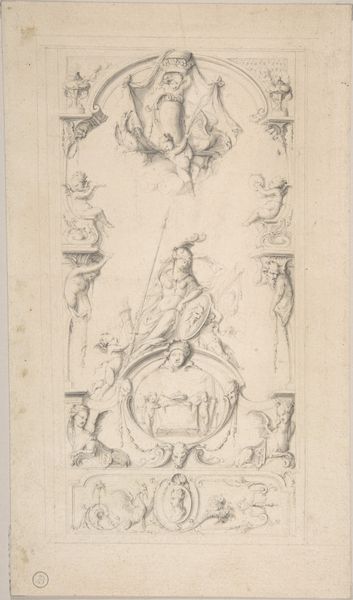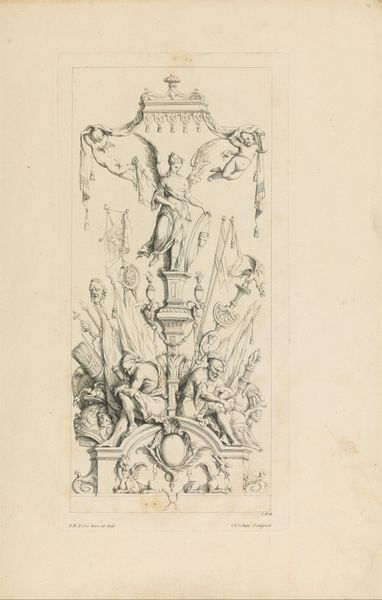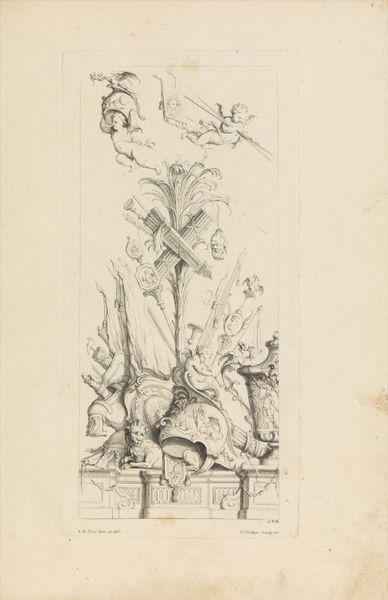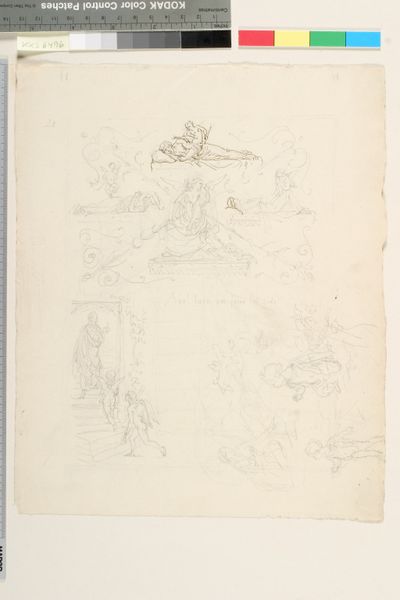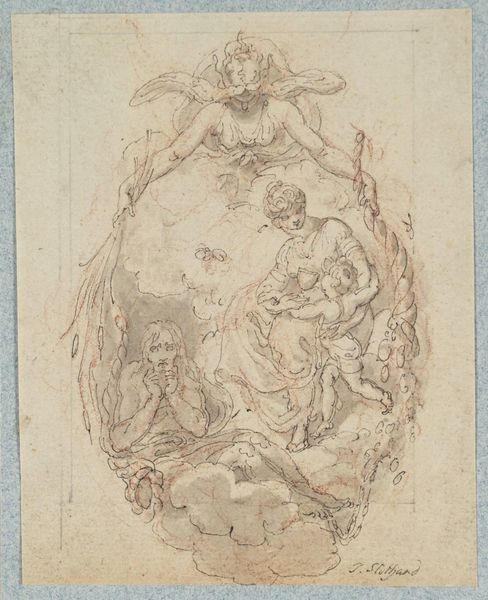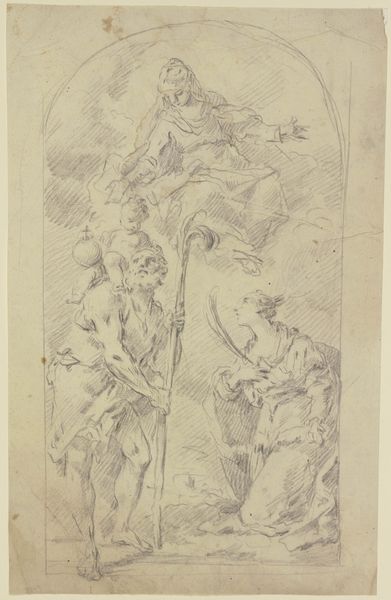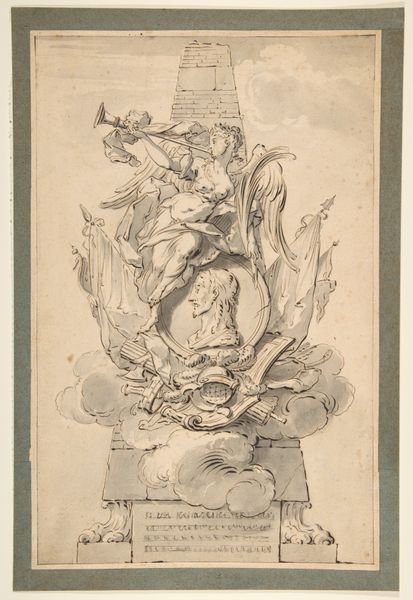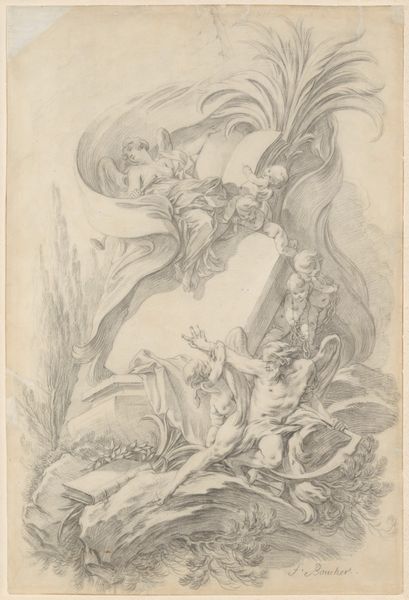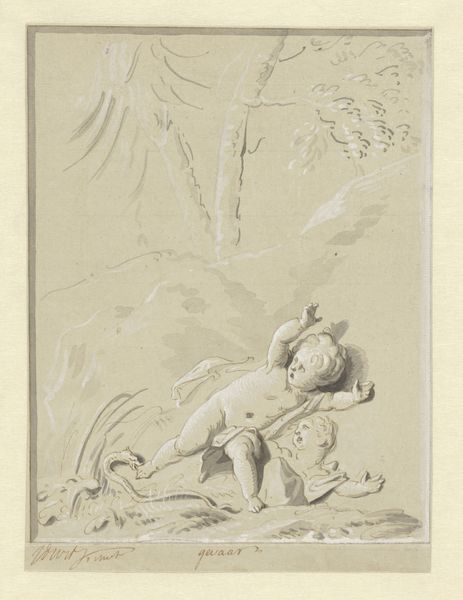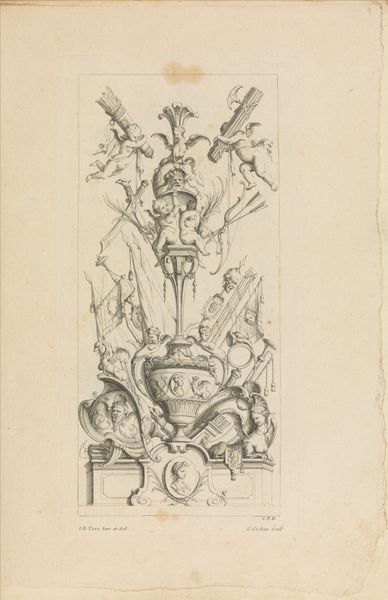
Udkast til titelvignet til et søkort (med teksten: Pass Kaart over Kattegattet, udg. af Søkortarkivet 1799) 1797 - 1800
0:00
0:00
drawing, ink
#
drawing
#
neoclacissism
#
ink drawing
#
allegory
#
ink
Dimensions: 225 mm (height) x 191 mm (width) (bladmaal)
Editor: This is Johannes Wiedewelt's "Udkast til titelvignet til et søkort," a title vignette for a sea chart, rendered in ink drawing around 1797-1800. It feels almost like a neoclassical dreamscape, full of symbolic figures floating within this oval frame. What do you see in this piece? Curator: I see a carefully constructed allegory steeped in the visual language of its time. Notice how the figures – Neptune, perhaps a personification of Navigation – are arranged in this idealized composition. The oval shape itself echoes classical wreaths of victory or knowledge. What feelings do these figures, and the scene as a whole, stir in you? Editor: It evokes a sense of grand, almost theatrical, authority, but rendered with such delicate lines in this ink drawing that seems strangely intimate. How would an 18th-century viewer understand the significance of the iconographic elements? Curator: An 18th-century viewer, especially one familiar with neoclassicism, would instantly recognize the allusions to classical mythology and the celebration of reason and order. The symbolism, such as Neptune representing dominion over the seas or perhaps the female figure representing cartography itself, served to legitimize the authority and reliability of the map it was intended to adorn. What purpose would these symbols have served at this time? Editor: I suppose the use of universally understood symbols could immediately convey the maritime power and established knowledge the map represented. Curator: Precisely. The drawing carries cultural memory through visual symbols to imbue the sea chart with authority. Today, we might not immediately grasp every nuance, but we can still sense the power and intention embedded within its design. I now recognize my view and understanding have been deeply affected by learning more. Thanks for the conversation! Editor: Me too, this was really insightful.
Comments
No comments
Be the first to comment and join the conversation on the ultimate creative platform.


